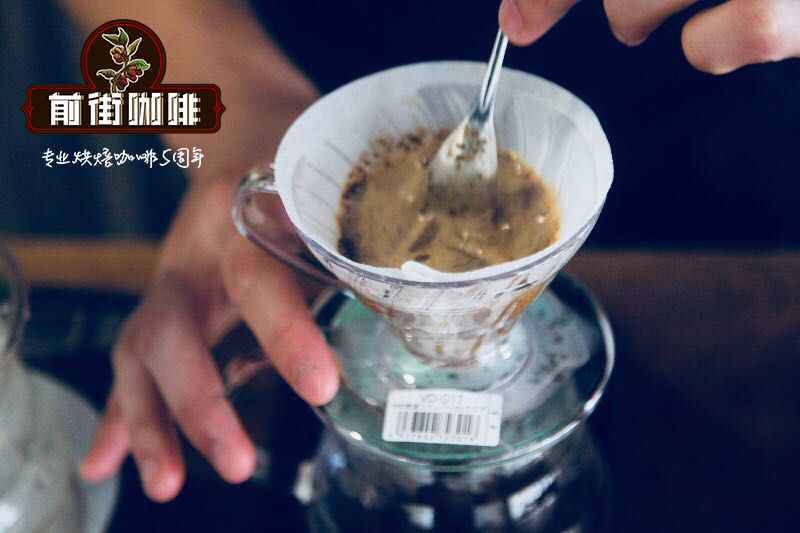What is the specialty of Colombian Medellin coffee? is Colombian Medellin coffee good?

Professional coffee knowledge exchange more coffee bean information please follow the coffee workshop (Wechat official account cafe_style)
Guojia: Colombia Medellin Coffee (Colombia)
Production area: Antioquia (Antioquia)
Manor: Sojia Manor (Jeric)
Variety: Kaddura (Caturra)
Sea pull: 1900 meters
Grade: European water washed extremely hard beans (SHB)
Treatment method: traditional washing treatment
To the west of Colombia is the Andes, which is divided into three parts: the western, central and eastern mountains. The Cauca and Magdalena rivers flow along the Caribbean to the lowland plains. Colombia is currently the second largest coffee producer in the world, using washing to treat Arabica coffee beans. It is also one of the largest producers of high-quality coffee in the world. Traditional deep-roasted coffee has a strong and memorable flavor. Coffee was first introduced to Colombia in 1808 by a priest from the French Antilles. Rilla brought it. Today, the country is the third largest coffee producer after Brazil and Vietnam, with an annual output of 12 million bags of 60 kg each, while Brazil produces 31 million bags a year.
The status of coffee in Colombia can be seen in the following examples: all vehicles entering the country must be sprayed and sterilized so as not to inadvertently cause disease and damage coffee trees.
The main producing areas are Huila (San Augustin), Narino, Tolima, Popayan (Cauca), Valle de Cauca, Meta, Antioquia (Medellin), Magdelena (Sierra Nevada),
Boyaca, Santander (Bucaramanga), etc. Columbia University? There are 700 million coffee trees on record, 66% of which are planted in plantations with modern planting methods. The rest is grown on small, traditionally run farms. The main varieties include Kaddura Caturra, Colombia Colombia, Tibica Tipica, Bourbon Bourbon, Elephant Bean Maragogype, and Tabi. Farms and cooperatives throughout the country, big or small, are distributed in more than 500000 municipalities and 14 major coffee-producing areas. A total of 2 million Colombians depend on coffee cultivation for a living, contributing 12.5 per cent to gross domestic product. Advanced Colombian coffee beans grow at m above sea level
The Andes, banana trees and rubber trees are planted between them to shade coffee trees. Coffee farmers in Colombia can sell all their products at an official low price? Can the Coffee Management Association sell it? Exporters, exporters may offer higher prices. In fact, the Coffee Management Association controls overall exports to Europe, while coffee to the United States is mainly exported through private exporters, however, all exports are controlled by the lowest export price.
The province of Antioquia (Antioquia), located in north-central Colombia, has 126000 hectares of coffee and produces 2000000 bags (60kgs/bag) of coffee beans, accounting for 18% of Colombia's production, second only to the province of Villa (Huila). Most of the province is alpine terrain belonging to the Andes, but it is blown by the warm Caribbean sea breeze. Medellin, the provincial capital, is Colombia's second largest city and an important coffee producing area in Colombia.
This production area has many small farmers micro-batch production of high-quality coffee beans are very characteristic of the flavor of the production area. In recent years, as the international market has paid more attention to the quality of coffee and the demand for high-quality coffee, it has changed to micro-batches (Micro-regional selections) provided by small farmers in micro-production areas, where dozens of small farmers provide their unit harvests into one micro-batch to sell. Quality control will be better, and many high-quality small farmers' coffee in specific micro-producing areas can be selected through batch-by-batch cup testing. Its coffee flavor is more lively, with fresh aromas of ripe fruit and caramel, and the combination of sour taste and sweet taste is well balanced.
● flavor description: roasted nut aroma, tomato, maltose, milk adjustable, good sweetness balance
Important Notice :
前街咖啡 FrontStreet Coffee has moved to new addredd:
FrontStreet Coffee Address: 315,Donghua East Road,GuangZhou
Tel:020 38364473
- Prev

Hawaii 100% Kona Coffee beans Kona Coffee Hawaii Kona Hawaiian Coffee
Professional coffee knowledge exchange more coffee bean information please follow the coffee workshop (Wechat official account cafe_style) Hawaii is a beautiful island, began to grow coffee in the 18th century, most of the coffee is grown in Kauai Island and Hawaii Island, there is a very ideal climate and soil, extremely careful handling process, coffee bean appearance is very perfect, but planting noodles
- Next

Colombia coffee producing area introduction Colombia what kind of coffee is good Medellin coffee beans good to drink
Professional coffee knowledge exchange More coffee bean information Please pay attention to coffee workshop (Weixin Official Accounts cafe_style) ◆ Introduction to Medellin coffee origin in Colombia Colombia Whether it is yield or texture, Colombia coffee is the first to be produced in Medellin. It is characterized by full coffee bean particles, rich nutrition, moderate acidity and good balance. Except for Medellin, the South
Related
- Detailed explanation of Jadeite planting Land in Panamanian Jadeite Manor introduction to the grading system of Jadeite competitive bidding, Red bid, Green bid and Rose Summer
- Story of Coffee planting in Brenka region of Costa Rica Stonehenge Manor anaerobic heavy honey treatment of flavor mouth
- What's on the barrel of Blue Mountain Coffee beans?
- Can American coffee also pull flowers? How to use hot American style to pull out a good-looking pattern?
- Can you make a cold extract with coffee beans? What is the right proportion for cold-extracted coffee formula?
- Indonesian PWN Gold Mandrine Coffee Origin Features Flavor How to Chong? Mandolin coffee is American.
- A brief introduction to the flavor characteristics of Brazilian yellow bourbon coffee beans
- What is the effect of different water quality on the flavor of cold-extracted coffee? What kind of water is best for brewing coffee?
- Why do you think of Rose Summer whenever you mention Panamanian coffee?
- Introduction to the characteristics of authentic blue mountain coffee bean producing areas? What is the CIB Coffee Authority in Jamaica?

